The popular PEP grant program has allowed hundreds of school districts to re-energize P.E. programs with new equipment and specialized training.
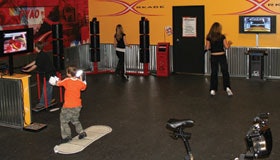
Tim McCord was bored. The year was 1999, and after two decades as a physical education teacher at Titusville (Pa.) Middle School - where classes revolved around a traditional curriculum of football in the fall, basketball in the winter, and softball and track and field in the spring - he was looking for a challenge, something to re-energize his department, his students and himself.
To find the answer, McCord requested permission from the district's superintendent to take a field trip to Naperville, Ill., where students at Central High School were among the first in the country to participate in physical education classes that actually improved more than their ball-handling skills. There, he saw instructors incorporating high-tech fitness equipment and detailed health-risk assessments into everyday P.E. classes.

No longer bored, McCord returned to Titusville - a small and economically stressed community in which half of all students at the time were eligible for free or reduced school-lunch programs - and shared his findings with the school board. The next thing he knew, McCord was handed a check for $30,000 (10 times the district's entire physical education budget that year) to revamp the middle school's P.E. department with cardiovascular-fitness and strength-training equipment, along with plenty of heart-rate monitors. With the following year came another check, this one for $40,000 to replicate the middle school's program at Titusville High School. One year later, the district gave McCord an additional $10,000 to purchase fitness-assessment machines for both schools.
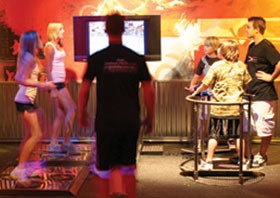
Then, in 2003, the district was awarded $342,000 from the federal government in the form of a Carol M. White Physical Education Program (PEP) grant, which funded repairs and upgrades to existing equipment, added climbing or traversing walls at every school in the district, and expanded overall P.E. programming. Then came the clincher: The high school's principal rearranged for the daily schedule to expand from eight classes to nine, shifting periods from 43 minutes to 40 and making room for daily P.E. sessions.
"All I did was explain to our school board that our physical education program was going nowhere," McCord says. "Now I don't think our kids understand how good they have it."

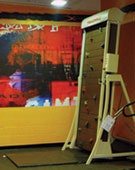
Since 2001, when 18 school districts shared $5 million in PEP grants, the program has awarded (based on need and proposed plans of action) almost $350 million - including $72 million last year - to help school districts, YMCAs, Boys & Girls Clubs and other organizations initiate, improve and expand physical education programming and staff training.
Phil Lawler, the former physical education coordinator for Naperville School District 203 and now the director of education and outreach for the nonprofit organization PE4life, says initial plans for the grant called for it to pay $125 million annually by now. PEP proponents are hoping to get funding jacked up to $220 million once the war in Iraq ends, but the Bush Administration has continually called for decreased allocations or the elimination of the PEP grant altogether. As of this writing, 2008 funding for the program had yet to be determined.
"The president is against the federal government getting involved in education," Lawler says. "But the PEP grant is one of the few things in Washington, D.C., these days that most Republicans and Democrats can agree on. Fortunately, we're doing enough good things with the grant money that PEP has developed a positive reputation."

250+ Exhibitors & 190 Educational Sessions | abshow.com.
Those good things include a variety of new programming at schools large and small - from lunchtime activities at West High School in Traverse City, Mich., that encourage kids to participate in interactive videogames and salsa dancing to the addition of adaptive physical education in northern California school districts and yoga training in southern California. "I can't tell you how many times parents stop me and thank me for what we're doing for these kids," McCord says. "We have kids who never would have been successful in P.E. class before who are very successful now and are willing to try different things. I see adults and kids all the time on the move in our community - bicycling, jogging, walking - which is something I did not see when I first moved to Titusville."
In fact, Titusville is home to one of six designated PE4life Academies in the United States, which collectively have trained more than 1,500 teachers, administrators and community leaders in the ways of so-called "new P.E." since 2001. The district hosts up to 10 training sessions a year for those looking to implement change in their own districts - with or without the assistance of a PEP grant.
"It takes more than dollars to make a change; it's about making a philosophical adjustment," says Eileen Hare, chair of the physical education department for the Neenah (Wis.) Joint School District, which received a three-year PEP grant for $843,621 in 2004 and used the money to purchase fitness-assessment technology, cardio-fitness equipment, strength-training machines, and climbing and traversing walls over a three-year period. Today, the district's physical education curriculum also includes kayaking and inline skating. "The majority of my staff was trained in sport education," Hare continues. "But we became embedded in the process, and instead of just working within the confines of a school district, we are trying to establish healthier communities. Healthier communities mean healthier kids."
To that end, Hare has forged partnerships with a local hospital (which fills an advisory role for heart-rate monitoring and body-composition testing), nearby universities (which send students to observe teaching methods and evaluate testing data), area YMCAs (which help transition students and their families to fitness-based lifestyles) and even the mayor's office (which works with Hare and other district administrators to brainstorm ways of creating a healthier Neenah).
"I don't have any regrets," Hare says. "We followed our plan, which was well researched, and all of our equipment purchases were well researched. We attended PE4life-sponsored training sessions early on, so we'd have a basis to create a new curriculum. You can get all the equipment you want. But if you don't have the training, the programming and the curriculum aligned with it, you're not going to have the student success that we've been having."
That success translates to, among other things, a district-wide increase in cardiovascular-fitness scores of 44 percent since 2004. And all Neenah students receive assessments (five or six pages at the elementary level and up to 30 pages at the high school level) providing health, wellness and fitness profiles. Hare also has seen anecdotal evidence. Most students move around a lot more in P.E. class now, for example, especially if they're wearing a pedometer and are required to log a specific number of steps per period. "Students know what their target heart-rate is, they know they need to take so many steps and they know that a portion of their grade depends on those things," Hare says. "It's now normal for kids to wear their heart-rate monitors on Mondays, Wednesdays and Fridays, and their pedometers on Tuesdays and Thursdays. The protocol is in place. That's the neat thing about this: knowing kids realize what's expected of them and seeing the results."
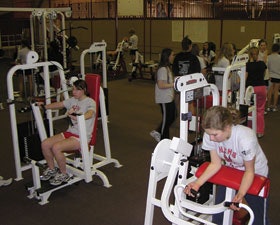
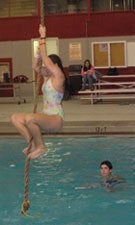
Grant winners are realizing a few things, too - including the power of PEP. "Nobody wants to hear what you're doing in physical education class if you don't have brand-new equipment," says Megan Kodish, a health and physical education teacher at Jersey Shore (Pa.) Middle School who used part of a three-year $489,000 grant awarded in 2006 to the Jersey Shore School District to create a 1,224-square-foot XRKade interactive fitness facility that she says is among only a few in the country. "I can't get the local TV news stations to come do a story on our cooperative gangs unit, but I can get them to come do a story on the XRKade. And while they're here, I can slip in that other information."
Time magazine published a story about "new P.E." seven years ago, and Titusville warranted a mention for its success in a rural area that today is still paying dividends. "We got about three sentences," McCord says. "But when you take that kind of national recognition to your school board, it goes a long way in terms of generating support for what you're doing."
For the first three years of the PEP grant's existence, winners were given a lump sum all at once; since 2004, the dollars have been spread out over three years. Kodish says her district's award of $489,000 was "very front-loaded," with the majority of money arriving during the first year. As a result, she was able to outfit the XRKade with several pieces of fun equipment - including Dance Dance RevolutionTM units, iJoy vibrating skateboards, the Airbounder treadmill trampoline, Spark virtual-cycling machines and a rotating TreadwallTM. All of that gear is still under warranty, but eventually some of it will break down, and there may not be enough money budgeted to fix or replace it.
"This is something that people don't think about," says Lawler, who made the topic a priority at September's inaugural PE4life PEP Grant Resource Conference, held to help new winners make informed spending decisions. "It's not even on their radar. At first, it's like Christmas with all that money, but the reality is going to set in - and it's already set in for those schools that were early PEP grant winners."
"PEP was a great shot in the arm for us," McCord says. "We had a great thing going, and that just made it better. But what people don't talk about is how they're going to maintain equipment and who's going to pay for new parts. Technology comes with site-license fees, so how are you going to maintain those? Heart-rate monitors have batteries, so who pays for them when they run out? Who pays for the climbing wall inspections? It's endless."
McCord's physical education budget - which had gradually increased to $14,000 - vanished when the district won its PEP grant. But the department still needed dollars to fund "the basic nuts and bolts of our program," such as the purchase of footballs and tennis nets, he says. Four years later, his annual budget is almost back to that $14,000.
Area businesses, according to Lawler, should be particularly eager to help maintain quality physical education programs, because many local students will be their future employees. "The PEP grant was never going to solve the physical education problem in this country, but it has provided models that other schools can follow," he says. "They just need to find alternative methods of getting the funding, and I think one method is going to be through the corporate world."

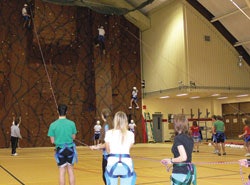
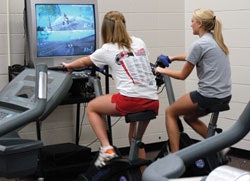
"We have to be our own best cheerleaders," Kodish adds. "We're trying to build public support in our community so what we're doing is perceived as something beneficial and gets people thinking about P.E. in a different way. We don't want them to think about going through the drama of being picked last to play dodgeball."
Jersey Shore's XRKade facility - developed and designed by iTech Fitness, a Denver-based developer and distributor of exergaming, interactive fitness and entertainment systems - is built into the P.E. curriculum, and all students are invited to work out after school. The facility also is open daily from 7:15 to 8 a.m. for students with a body mass index of 25 or higher, and Kodish says she is considering bringing in a local dietician to discuss nutritional issues with them. Plus, she's working with P.E. teachers from Jersey Shore High School, which built a 5,000-square-foot wellness center filled with traditional fitness and strength equipment using its PEP grant allocation, to add a handful of interactive pieces there. That will help ease the transition to ninth-grade P.E. classes - especially for kids addicted to, say, Dance Dance Revolution.
McCord is planning another trip to Naperville this year to observe the district's Learning Readiness P.E. program in action, but this time he's not going alone; he's taking a seven-member team that includes one additional P.E. teacher, two math instructors, two language arts teachers and a principal. Lawler says Naperville plans to roll out the red carpet for them. "It's important that the English, math and science teachers, as well as school board members and other administrators, respect what's going on in the physical education program," he says.
Naperville's LRPE program, implemented during the 2005-06 school year, adheres to a class schedule that's based on the belief in a link between physical education and improved math and literacy scores. According to PE4life data, Naperville Central students taking a physical education class immediately before a math class increased their algebra scores by an average of 20 percent, compared to a 4 percent increase for students who took P.E. several hours after math class. Similar results were seen among students who took reading classes immediately after P.E. That's why, on national No Child Left Behind testing days during the 2006-07 school year, 3,000 Naperville Central students walked the halls to upbeat music before settling into their desks and registering the school's highest test scores ever.
The P.E. philosophy at Naperville, which eventually won a PEP grant in 2004 (one year before Lawler retired), works on the playing field, too. Interscholastic sports teams from the district's two high schools have won more state titles during the past decade since Naperville invested in "new P.E." than they did in the previous 50 years combined.
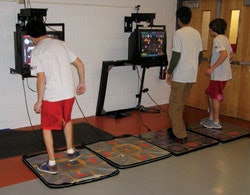
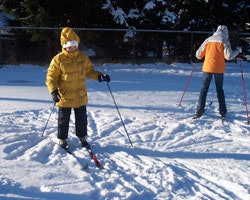
Despite the Bush Administration's numerous attempts to bench the PEP grant - and its uncertain fate in 2008 - proponents remain positive about the program's health.
"I believe that PEP's future is a bright one," says PE4life president and chief executive officer Anne Flannery, citing its bipartisan support. "That doesn't mean that we stop working hard on the Hill, because the war and the deficit present funding challenges for every federal program. However, given the increasing health-care costs the nation faces, this is one of the most cost-effective programs the federal government has."
"I don't think there's any question that it will continue," Lawler adds. "It's doing too many good things. Childhood obesity isn't just a school issue. This is a matter of national security. There are some health economists who say the American economy will collapse because of health-care costs before Social Security runs out. The health of our children is a bigger threat to this country than terrorism, and that's a pretty big statement to make."
































